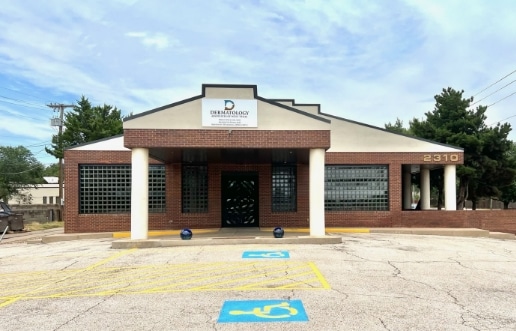
Wondering what’s causing those itchy red spots and whether you should see a dermatologist about your rash? Most rashes are harmless and usually go away on their own; however, some rashes may require further treatment. Here are some of the different kinds of rashes and how they are treated,
Eczema
Also known as atopic dermatitis, eczema causes a red itchy and weepy rash to develop. While eczema can develop just about anywhere on the body it is more common on the elbows, face, neck, and ankles. It’s important to recognize triggers (e.g. dry skin; pet dander; household cleaners) to reduce flare-ups.
Over-the-counter medications such as antihistamines can be used to manage flare-ups; however, you may want to turn to a dermatologist for steroid creams, light therapy, and other treatment options to better manage your eczema.
Chickenpox
Has your child developed an intensely itchy rash all over their body and face? If they haven’t been vaccinated against chickenpox than this viral infection may be to blame for these insanely itchy spots. Chickenpox is a highly contagious infection that appears most often in school-age children. The rash may itch and ooze for a couple of days before crusting over.
It usually takes about a week for a chickenpox rash to go away. If you suspect that your child might have chickenpox it’s important that you see a doctor as soon as possible. While the infection will just need to run its course there are ways to ease symptoms at home through special ointments, creams, and soothing oatmeal baths.
Hives
Hives or urticaria causes red itchy welts to appear. These flat bumps can be extremely itchy and may continue to disappear and appear over the course of several hours. Most cases of hives usually go away within 12 hours. Stress, drugs, food allergies, insect stings, and bites, and certain infections can also trigger hives.
While most acute cases of hives will go away, if you are dealing with symptoms that last more than six weeks or are accompanied by trouble breathing, facial swelling or other signs of a serious allergic reaction it’s important that you see a doctor immediately.
Heat Rash
This is another common and harmless rash that appears during those hot, humid days. A heat rash will usually appear suddenly and is characterized as a cluster of red, pimple-like bumps. They can appear anywhere on the face or body but are most often found on the arms, chest, or groin. Taking an over-the-counter antihistamine may help manage the itching. It’s also important to find a cooler environment and to wear lightweight clothes with breathable fabrics.
Athlete’s Foot
Notice a red, burning scaly rash between your toes? If so, this could be a fungal infection known as athlete’s foot. There are over-the-counter antifungal creams that can be applied directly to the infection to kill the fungus. If over-the-counter antifungal medications aren’t providing you with relief or if you’re unsure whether you have athlete’s foot it’s important that you see a dermatologist.
If you are dealing with a painful, widespread, or persistent rash it may be time to see your dermatologist to find out what’s going on. If in doubt, give your doctor a call. Based on your symptoms we can determine whether or not you should come into the office.



